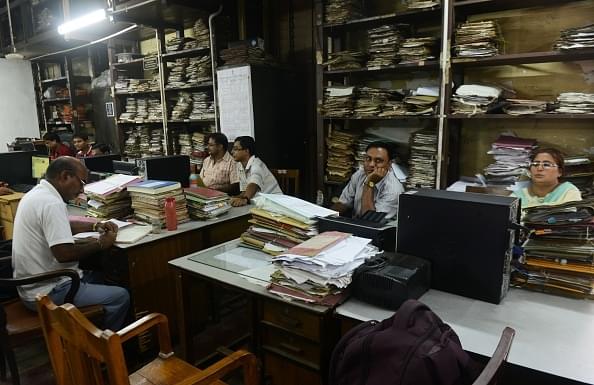Insta
Manish Sabharwal: India’s Problem Is Not Unemployment But Low Wages. Here’s How To Fix This.
Swarajya Staff
Nov 21, 2016, 07:47 PM | Updated 07:47 PM IST
Save & read from anywhere!
Bookmark stories for easy access on any device or the Swarajya app.


Modest wages have been taking cover in the much-debated problem of unemployment in India.
The real problem lies in lower wages and not unemployment, the reason why the official unemployment rate of 5 per cent cannot be challenged, Manish Sabharwal writes in a report in The Indian Express.
Our official unemployment rate of 5 per cent is not a fudge and anybody who wants a job has one; they just don’t get the wages they want or need.
The generation of high-paying private sector jobs is hitting a brick wall due to three ill-founded arguments based on wages: government vs private, nominal vs real and gross vs net.
One, government vs private wages: People at the top of the government get paid too little but people at the bottom of the government get paid too much. Unfortunately people at the bottom are 85 per cent of the numbers and greatly distort the labour market because Class 3 and 4 employees get paid more than 200 per cent of their private sector counterparts for the same job not including low performance accountability and high job security.
Two, nominal vs real wages: Since we cannot take jobs to people in the short run, we need to take people to jobs. But the migration to cities is being retarded by the huge mispricing of land that directly affects living, eating and commuting costs in India’s few job magnets (we only have 50 cities with more than a million people versus China’s 375).
The economic wastelands of Mumbai, Delhi and Chandigarh are a far cry from job magnets like Gachibowli, Mohali, Gurgaon and Bangalore because the new clusters combine an infinite supply of mixed-use commercial and residential real estate (happiness economists suggest that commute time is a key component of happiness).
Three, gross vs net wages: A monthly salary of Rs 15,000 per month in a cost-to-company salary world only ends up as a Rs 8,000 bank credit because employers are required to make mandatory deductions of 45 per cent of salary for poor value programmes like provident fund, ESI, LWF, EPS, and much else.
Sabharwal puts forward three regulatory interventions that can turn the situation around: faster urbanisation, lower regulatory cholesterol and broader human capital.
Faster urbanisation means an increase to the number of Indian cities with more than a million people from 50 to 200; bad urbanisation is better than no urbanisation but high quality urbanisation like having real mayors, robust city finances, etc could create the virtuous cycle of higher formalisation, higher productivity and higher wages.
Lower regulatory cholesterol for job creation is important because most of our workers work in low-productivity enterprises that are not productive enough to pay the wage premium; our 6.3 crore enterprises only translate to 18,000 companies with a paid-up capital of more than Rs 10 crore.
Human capital is key; neglecting primary school education for decades after Independence is a mistake being amplified by the new world of work that disproportionately values reading, writing, arithmetic and soft skills.
As the long-term plans for formalisation, urbanisation and human capital yield results, Sabharwal suggests measures for a time-bound monitoring of the three interventions.
- We must overrule its self-serving case for an Establishment Number and replace the 27 different numbers issued to every employer with a single Universal Enterprise Number.
- We must set a date for 100 per cent paperless, presence-less and cashless compliance for all state and central labour laws.
- We must end the shameful stonewalling of the ministry of labour of the provident fund and ESI reforms announced in the budget. This can be done by making employee contribution to the provident fund voluntary and creating competition for ESI and EPFO by allowing employees to choose alternatives like NPS and health insurance.




